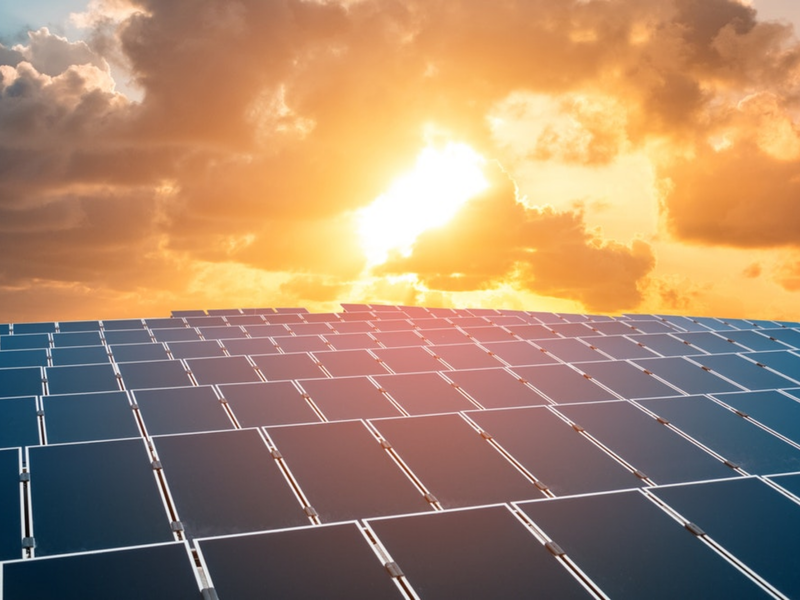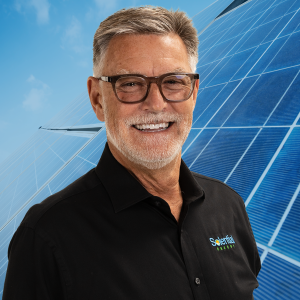Contact Us Today!
(555) 555-5555 | SALES@SOLENTIAL.COM
Or, fill out the form below and we'll get right back to you.
(555) 555-5555 | SALES@SOLENTIAL.COM
Or, fill out the form below and we'll get right back to you.


Yes and no.
How’s that for an answer? Here’s a better one: It’s complicated. The reason is you can’t simply install a commercial solar array at your business, wastewater treatment facility, grain mill, food processing plant, or school and consider your energy issues to be over and done with. Yes, you will reduce your immediate energy spend, but you may still have underlying and potentially serious issues.
If you take a more comprehensive, strategic approach with a knowledgeable partner on the front end of adding solar energy, you will get better results in terms of long-term, sustainable energy efficiency and savings. Here’s why.
Complex energy problems require custom energy strategies
There are a host of considerations that go into solving the historic, energy-related cost pressures facing every American public and private enterprise today. Careful examination of each of the following will determine the best path forward with solar power:
Let’s take a closer look at each.
Energy Usage
The starting point for any energy strategy is determining how much energy your operation uses, when it’s being used in terms of time of day, day of the week or month out of the year; and what it’s used for. The volume of energy currently used and anticipated growth will dictate the size of a solar array. The “when” part of the equation is very important especially as it relates to utility companies’ demand charges. Those are the higher rates charged during peak demand times. Finally, how you’re using energy – to power driers in a grain mill or aerators in a water treatment plant – is another critical data point. More on that down the list.
Resiliency
Bloomberg News, among others, is predicting rolling blackouts this summer. Other media outlets are specifically calling out the Midwest and California as likely victims of energy interruptions. Such blackouts can be devastating to manufacturing, food processing, and water/wastewater treatment for example whose operations often run 24/7. There are other threats to resiliency such as ice storms, tornadoes and hurricanes. 
While backup generators are one line of defense, a microgrid is a much more robust solution to help ensure resiliency. With a microgrid, you combine energy sources such as solar, generators, and battery storage to create your own self-contained grid that is not subject to external commercial interruptions. Microgrids were once the domain of military installations and universities but are gaining traction among water/wastewater treatment facilities and health systems. Combining renewable, self-generated solar to the microgrid mix is a major win.
Physical Infrastructure
Rising energy costs can also be tied to aging infrastructure. Let me give you two examples. In the 1970s, there were building booms in a number of industries including correctional facilities and wastewater treatment plants. These facilities, including their buildings and equipment, are now 50 years or more old and energy inefficient. Windows have failed, lighting is outdated, HVAC and production equipment have long passed its expiration date, and new, high-tech systems are nonexistent. All of this combined make for buildings and facilities that consume far more energy than necessary.
Solential recommends a complete review of our customers’ physical infrastructure, top to bottom, inside and out, to identify opportunities to reduce energy reliance, which also brings down usage and costs.
IT and Control Systems
Energy-related IT and control systems have become increasingly sophisticated, delivering functionality and data that help understand, control, and reduce energy use. For example, smart meters record consumption of electricity, voltage levels, current, and power factor. This provides real-time insights into consumption behavior, allowing you to make real-time adjustments Solential also provides real-time insights into solar energy production through SolView, a Cloud-based management system, that monitors energy production and energy usage. Modern energy systems and applications like Solview play a critical, ongoing role in reducing both energy usage and costs.
Industry Concerns
The need for consistently affordable, available energy is universal. However, the energy needs, and cost savings/cost efficiency measures of a wastewater treatment facility are far different from a correctional facility which is a far cry from what concerns a human food or feed processing operation. What’s important is to have an energy advisor or consultant with deep roots in solar and energy systems who’s also a good listener and collaborator. Knowledge and humanistic skills are the foundation of any strategy.
Carbon Reduction
While reducing energy costs is the primary driver for adopting solar energy, reducing one’s carbon footprint and increasing sustainability are also benefits to consider. Increasingly, both public and private sectors are being called upon to reduce their carbon footprints. However, as America transitions from fossil fuels to renewable energy sources, solar power is no longer a “feel good” decision. The government has set aggressive goals for reducing carbon emissions by adopting renewable energy. The decision then becomes when will we transition our school, correctional facility, manufacturing plant, or hospital? Just another reminder that reducing costs is not the only driver of a smart, solar-enabled energy strategy.
Transitioning to Solar
We could write a book on this. If and when you decide to include solar power in your energy strategy, there are practical considerations like where will the array be sited: do I have land, do I need to acquire land or can the array be located on a roof, canopy or over a body of water such as a lagoon or reservoir? How will I finance the infrastructure: through loans, state and federal grants, or through creative mean such as solar investors? There’s also the happy problem of generating more energy than needed in which case you need a strategy for selling the excess back to the grid. Lastly, is an array all you need or is a microgrid a better solution?
Has Solential Eased Your Energy Stress Yet?
No, but we can. And we’ll do it through a consultative approach with seeks to understand all of the above before submitting a strategy grounded in solar power and customized with recommendations on the best way to achieve long-term energy efficiency, affordability and sustainability. We’ll also provide industry-specific case studies to see how the Solential approach has worked for others in your industry.
To learn more, visit our website Solential.com or contact Mark Fallahee to schedule a consultation.
